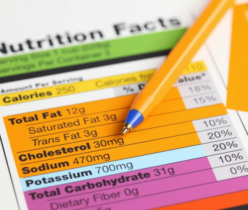Losing weight is a common goal for many, and exercise is a crucial component of any weight loss journey. The best workouts for weight loss are those that combine intensity, variety, and sustainability. From the power of high-intensity interval training to the joint-friendly nature of low-impact exercises, this article explores a range of workouts that can help you burn calories, build muscle, and enhance overall fitness. Whether you prefer bodyweight exercises, cardio, resistance training, or a mix of all, there’s a workout regimen to suit your preferences and help you achieve your weight loss goals.
Key Takeaways
- High-intensity interval training (HIIT) and circuit workouts are highly effective for burning fat and improving cardiovascular health.
- Running and jumping rope are excellent for calorie burning, with running engaging large muscle groups for increased calorie expenditure.
- Incorporating strength training, such as kettlebell workouts and weightlifting, can boost metabolism and support long-term fat loss.
- Supplementary workouts like yoga and walking enhance weight loss by improving flexibility, and mindfulness, and providing a low-impact exercise option.
- Creating a sustainable exercise plan involves setting realistic goals, balancing exercise with nutrition, and staying motivated through plateaus.
Maximizing Fat Loss with Bodyweight Workouts

The Power of High-Intensity Interval Training
High-intensity interval Training (HIIT) is a dynamic and efficient approach to weight loss that leverages alternating periods of intense activity with intervals of lighter effort or rest. This method maximizes calorie burn and increases metabolic rate, not only during the workout but also for hours afterward.
HIIT workouts can be tailored to any fitness level, making them accessible to a wide range of individuals seeking fat loss. By adjusting the intensity and duration of the intervals, these workouts can be scaled to challenge the beginner or the seasoned athlete alike.
A typical HIIT session might include a series of exercises such as sprints, burpees, or jumping jacks, structured as follows:
- Warm-up: 5 minutes of moderate activity
- High-intensity interval: 1 minute of maximum effort
- Recovery interval: 1 minute of low-intensity activity or rest
- Repeat the high-intensity/recovery cycle for 20-30 minutes
- Cool down: 5 minutes of stretching or light walking
Incorporating HIIT into your routine can lead to significant improvements in endurance and overall fitness, supporting your weight loss journey.
Strength Workouts: Building Muscle to Burn Fat
Incorporating strength workouts into your exercise regimen is a powerful strategy for Building Muscle and enhancing fat loss. Muscle tissue is metabolically active, meaning it burns calories even when you’re at rest. This process not only helps during your workout but continues to have an effect long after you’ve finished, thanks to excess post-exercise oxygen consumption (EPOC).
By focusing on building muscle, you create a more efficient calorie-burning machine within your body. The added muscle mass improves your body composition and positively impacts your metabolism, leading to more effective weight loss over time.
A diet rich in protein and sufficient calories is essential for muscle growth. It’s normal to gain some body fat during this process, but the increased muscle mass will make it easier to lose fat later on. Here’s a simple bodyweight workout plan to get you started:
- Prisoner Squats (20-30 seconds)
- Elevated Pushups, one hand on a dumbbell (15 seconds on each side)
- Prisoner Reverse Lunges (20 seconds on each side)
Remember, beginners may experience faster muscle gains compared to those who are already accustomed to strength training. This initial boost can be highly motivating as you embark on your journey to build muscle and burn fat.
Bodyweight Circuit Training: A Comprehensive Approach
Bodyweight circuit training stands out as a versatile and efficient method for those aiming to lose weight. It combines various exercises performed in succession with minimal rest, engaging multiple muscle groups and keeping the heart rate elevated. This approach not only helps in burning a significant number of calories during the workout but also enhances post-exercise oxygen consumption, leading to increased fat burning even after the session has ended.
To get started, here’s a simple circuit that can be done anywhere:
- Ankle Hops: Begin with light hops to get your heart rate up.
- Bodyweight Squats: Follow with squats to engage the lower body.
- Push-Ups: Incorporate push-ups to work the upper body and core.
Complete each exercise back-to-back, rest for one minute, and aim for five rounds. Timing your workout can provide a benchmark to surpass in future sessions, adding a competitive edge to your routine.
Consistency is key in bodyweight circuit training. Regular practice will not only improve your strength and endurance but also contribute to a steady weight loss journey. By integrating this workout into your weekly schedule, you can expect to see progressive results without the need for any special equipment.
Weight Loss Workout: Burn Calories with Cardio Exercises

The Benefits of Low-Intensity Cardio
Low-intensity cardio is a cornerstone of a well-rounded Workout for a Weight Loss plan. It’s a sustainable option that offers a multitude of benefits, especially for those who are new to exercise or are looking for a workout that’s gentle on the joints.
The Lowdown on Low-Intensity Cardio: Unveiling Its Fat-Burning potential is clear when we consider its ability to raise and maintain heart rate effectively. This type of workout is versatile and can be adapted to fit any fitness level, making it an excellent choice for building endurance and aiding in weight loss.
Another notable advantage of low-intensity cardio is its ability to preserve lean muscle mass. Unlike high-intensity workouts, which may trigger muscle loss, low-intensity options support muscle retention while still promoting fat burn.
Here are some effective low-intensity cardio exercises:
- Walking briskly for at least 30 minutes most days of the week
- Cycling at a moderate pace to burn calories and tone the lower body
- Using battle ropes as a low-impact, high-reward exercise
Incorporating these exercises into your routine can lead to substantial benefits for both short-term and long-term health and fitness goals.
Running: A High-Calorie Burning Exercise
Running is a powerhouse when it comes to calorie expenditure, engaging large muscle groups like the glutes and legs for maximum burn. Starting with a dynamic warm-up can enhance performance and prevent injuries.
For those looking to increase the challenge, incorporating interval training can significantly boost the calorie-burning effect. Alternating between high-intensity sprints and recovery periods makes the workout more effective.
Consistency in running is key to seeing weight loss results. Aim to gradually increase both the duration and intensity of your runs to continue making progress.
Here’s a simple structure to get started with interval running:
- Warm-up: 5 minutes of light jogging or brisk walking
- Interval 1: 1 minute of high-intensity running
- Recovery: 2 minutes of walking or light jogging
- Interval 2: Repeat the high-intensity running
- Cool down: 5 minutes of slow jogging or walking
Repeat the intervals for a total of 20 to 30 minutes, and as your endurance improves, increase the intensity or duration of the high-intensity segments.
Jumping Rope: A Fun and Efficient Calorie Burner
Jumping rope is not only a playful activity from our childhood, but it’s also a powerful workout for those aiming to lose weight. It’s an incredibly efficient way to burn calories and improve cardiovascular health. A mere 10 minutes of jumping rope can be equivalent to running an 8-minute mile in terms of cardiovascular benefits and calorie expenditure.
- Calories Burned: Depending on intensity, you can burn over 10 calories per minute.
- Full-Body Workout: Engages legs, arms, and core.
- Improves Coordination: Enhances balance and agility.
Jumping rope is a versatile exercise that can be incorporated into various workout routines. Whether you’re looking to add a high-intensity burst to your circuit training or seeking a standalone cardio session, it’s an effective choice for those at any fitness level.
For beginners, start with shorter intervals and gradually increase the duration as your stamina improves. Remember to maintain proper form to maximize the workout’s effectiveness and prevent injury.
Incorporating Resistance Training into Your Routine

Kettlebell Workouts for Full-Body Conditioning
Kettlebell workouts are a powerhouse when it comes to weight loss and full-body conditioning. These versatile tools offer a unique combination of strength training and cardiovascular benefits, making them an ideal choice for those looking to shed pounds and enhance their overall fitness.
The cornerstone of kettlebell training is the kettlebell swing, a dynamic movement that targets a wide range of muscle groups. Here’s a simple breakdown of a kettlebell workout that can be incorporated into your weight loss regimen:
- Kettlebell Swings: 3 sets of 15 reps
- Goblet Squats: 3 sets of 12 reps
- Kettlebell Rows: 3 sets of 10 reps on each side
Kettlebell exercises not only improve muscle tone and endurance but also elevate your heart rate, leading to increased calorie burn both during and after your workout.
By regularly including kettlebell exercises in your routine, you can expect to see significant improvements in your strength, muscle definition, and metabolic rate. This metabolic boost is crucial for sustained fat loss and maintaining a lean physique.
Weightlifting: Boosting Metabolism for Long-Term Fat Loss
Weightlifting is not just about building strength; it’s a powerful tool for long-term fat loss. Muscle is metabolically active, which means it burns calories even when you’re not working out. This contributes to a higher resting metabolic rate, allowing you to burn fat more efficiently over time.
Weightlifting ignites fat loss not only during the exercise but also post-workout. The process known as excess post-exercise oxygen consumption (EPOC) keeps your metabolism elevated as your body returns to its resting state, leading to continued calorie burn.
Incorporating weightlifting into your routine can counteract the natural decline in metabolism and muscle mass that comes with aging. Here’s a simple formula to get started with metabolic resistance training:
- Total-body warmup (2x)
- Prisoner Squats (20-30 seconds)
- Elevated Pushups, one hand on a dumbbell (15 seconds on each side)
- Prisoner Reverse Lunges (20 seconds on each side)
As you progress, the muscle gains will not only improve your body composition but also enhance your ability to burn fat, making weightlifting an essential component of any weight loss exercise plan.
Boxing: Combining Cardio and Strength for Optimal Results
Boxing is a unique exercise that marries the calorie-burning benefits of cardio with the muscle-building potential of strength training. It’s an all-encompassing workout that can lead to significant weight loss and body sculpting. Boxing workouts demand a high level of energy expenditure, which means you’re not only burning calories during the session but also long after you’ve finished as your muscles recover and rebuild.
Boxing’s combination of high-intensity movement and resistance engages multiple muscle groups simultaneously, making it an efficient workout for those short on time but aiming for maximum impact.
A typical boxing workout might include a series of rounds that focus on different aspects of fitness. Here’s a simplified structure of a boxing workout designed for weight loss:
- Warm-up with dynamic stretches and light cardio
- Rounds of shadow boxing focusing on form and technique
- High-intensity rounds with increased punch speed
- Power rounds to build strength and endurance
- Cool down with stretching and light cardio
This workout not only helps in shedding pounds but also improves cardiovascular health, enhances coordination, and increases overall strength. It’s a versatile workout that can be tailored to any fitness level, making it accessible to a wide audience.
Supplementary Workouts to Enhance Weight Loss
Yoga: Improving Flexibility and Mindfulness
Yoga, often perceived as a practice for enhancing flexibility and mindfulness, also holds the potential for aiding in weight loss. Engaging in a flowing sequence of yoga poses can create a continuous, active practice that lasts anywhere from 10 to 30 minutes. This practice emphasizes fluid movement and mindful breathing, which according to a 2011 study, can help lower stress and maintain or even reduce body fat.
Yoga’s unique combination of strength training, flexibility, and mindfulness can support fat loss goals and contribute to a healthier lifestyle. It’s not just about the calories burned during the practice; it’s also about the holistic benefits that help manage stress and improve overall well-being.
For those looking to incorporate yoga into their weight loss journey, styles like vinyasa or power yoga are particularly effective. These dynamic forms of yoga blend flowing movements with strength-building poses, increasing heart rate and calorie burn. To maximize the benefits, consider joining a local yoga studio for professional guidance. Remember to conclude your practice with a five-minute cooldown, including gentle stretches to improve flexibility and prevent injury.
Low-Impact Exercises for Joint-Friendly Fitness
Low-impact exercises are a crucial component of a weight loss journey, especially for those looking to protect their joints. These exercises are not only gentle on the body but also effective in burning calories and enhancing overall fitness. Incorporating low-impact workouts into your routine can be a game-changer for sustainable weight loss.
Here are some home exercises that are low-impact yet effective for weight loss:
- Swimming: Provides a full-body workout and is easy on the joints.
- Cycling: Great for building leg strength and improving cardiovascular health.
- Elliptical training: A good alternative to running that reduces stress on the knees.
- Pilates: Strengthens the core and improves flexibility.
Low-impact exercises can be seamlessly integrated into your weekly workouts, used as cardio finishers post-strength training, or enjoyed as effective active recovery sessions.
These exercises not only support your weight loss goals but also ensure that you are not putting undue stress on your joints. Whether you’re performing these home exercises or hitting the gym, the key is consistency and enjoyment in your fitness routine.
Walking Workouts: Simple Steps to a Slimmer Figure
Walking is a low-intensity exercise that can be surprisingly effective for weight loss. By incorporating walking workouts into your routine, you can enjoy a form of exercise that is joint-friendly and accessible to people of all fitness levels. To optimize your walking for weight loss, consider varying your pace and adding bodyweight exercises to create a comprehensive workout.
Here are some tips to enhance your walking workouts:
- Start with a warm-up to raise your heart rate, such as two minutes of jumping jacks.
- Incorporate intervals of brisk walking or jogging in place to increase calorie burn.
- Add bodyweight exercises like squats and arm circles to activate different muscle groups.
- Aim for consistency in your walking routine to see gradual weight loss over time.
Consistency is key in any weight loss journey. A regular walking workout, combined with a balanced diet and other forms of exercise, can lead to sustainable weight loss and improved overall health.
Remember, the goal is not just to lose weight but to maintain a healthier lifestyle. Walking is a simple step towards achieving that goal, and when done regularly, it can contribute significantly to your weight loss efforts.
Creating a Sustainable Weight Loss Exercise Plan

Setting Realistic Goals and Tracking Progress
The journey to effective weight loss begins with setting realistic, achievable goals. But what exactly makes a goal realistic? It’s a target that is challenging yet attainable, and specific enough to measure progress. For instance, aiming to lose 1-2 pounds per week is considered healthy and sustainable.
Consistent tracking of your progress is crucial. It helps in understanding how your body responds to different exercises and dietary changes, and in making necessary adjustments to your routine.
To effectively track your progress, consider the following steps:
- Define clear, measurable goals.
- Keep a workout and diet journal.
- Regularly measure key metrics like weight, body measurements, and fitness levels.
- Review and adjust your goals as needed based on your progress.
Remember, the key to long-term success is patience and persistence. Quick fixes may seem appealing, but they often lead to unsustainable results and potential health risks.
Balancing Exercise with Nutrition for Maximum Results
Achieving weight loss is not just about the hours spent exercising; it’s equally about the foods you choose to fuel your body. A harmonious balance between exercise and nutrition is essential for maximum fat loss results. A diet rich in protein, healthy fats, and vegetables, paired with adequate hydration and fiber intake, can significantly enhance your workout efforts.
- Protein: Supports muscle repair and growth.
- Healthy Fats: Provide sustained energy.
- Vegetables: Offer essential vitamins and minerals.
- Water: Improves metabolism and satiety.
- Fiber: Aids in digestive health.
By integrating these nutritional components with a consistent exercise regimen, you can create a powerful synergy that propels your weight loss journey forward. This approach not only helps in shedding pounds but also in maintaining a healthy and energetic lifestyle.
Remember, while exercise is a crucial part of losing weight, it’s the combination with a well-structured diet that leads to sustainable success. Adjusting calorie intake and portion sizes to match your workout intensity and goals is key. As you progress, continue to refine your diet and exercise plan to ensure it aligns with your evolving needs and preferences.
Workout for Weight Loss: Staying Motivated and Overcoming Plateaus
Maintaining motivation and overcoming plateaus are critical components of a successful weight loss journey. Plateaus, where weight loss stalls despite continued efforts, can be particularly frustrating. To break through these plateaus, consider adjusting your approach to diet and exercise. For instance, increasing exercise intensity or frequency can reignite your metabolism. Tracking your dietary intake meticulously ensures you’re not consuming more calories than you realize, which can impede weight loss.
Consistency is key in any weight loss endeavor. Regular self-coaching and progress updates can help you stay on track and make necessary adjustments to your routine. Remember, weight loss is not linear, and plateaus are a normal part of the process.
Here are some strategies to stay motivated:
- Manage stress effectively to prevent emotional eating.
- Incorporate a variety of workouts to keep your routine fresh and engaging.
- Set small, achievable goals to maintain a sense of progress.
- Celebrate non-scale victories, such as improved endurance or strength.
Conclusion
In summary, the journey to weight loss is a multifaceted one, incorporating various forms of exercise that cater to different preferences and fitness levels. From the high-energy bursts of HIIT and the rhythmic endurance of running to the strength-building kettlebell workouts and the low-impact benefits of yoga and walking, there’s a workout for everyone. Remember, consistency is key, and combining these workouts with a balanced diet and healthy lifestyle will yield the best results. Whether you’re working out at home or in the gym, the most important step is to get moving and stay motivated. Embrace the process, and you’ll be on your way to a healthier, fitter you.
Frequently Asked Questions
What are the best bodyweight exercises for weight loss?
Bodyweight exercises such as high-intensity interval training (HIIT), strength workouts, and circuit training are highly effective for weight loss. They can be done anywhere and require no special equipment.
How does running help with weight loss?
Running activates large muscle groups like the glutes and legs, which leads to a higher calorie burn, making it an excellent exercise for weight loss.
Can kettlebell workouts help me lose weight?
Yes, kettlebell workouts are great for weight loss because they burn a significant number of calories while also building muscle, which can boost your metabolism.
Is yoga effective for weight loss?
While yoga may not burn as many calories as some high-intensity workouts, it can complement any workout routine by improving flexibility, mindfulness, and overall well-being.
What is the role of nutrition in a weight loss exercise plan?
Nutrition plays a crucial role in weight loss. A balanced diet combined with a consistent exercise routine maximizes fat loss and overall health.
How can I stay motivated to continue my weight loss journey?
Staying motivated involves setting realistic goals, tracking progress, and finding activities you enjoy. Overcoming plateaus may require adjusting your exercise routine and diet.





